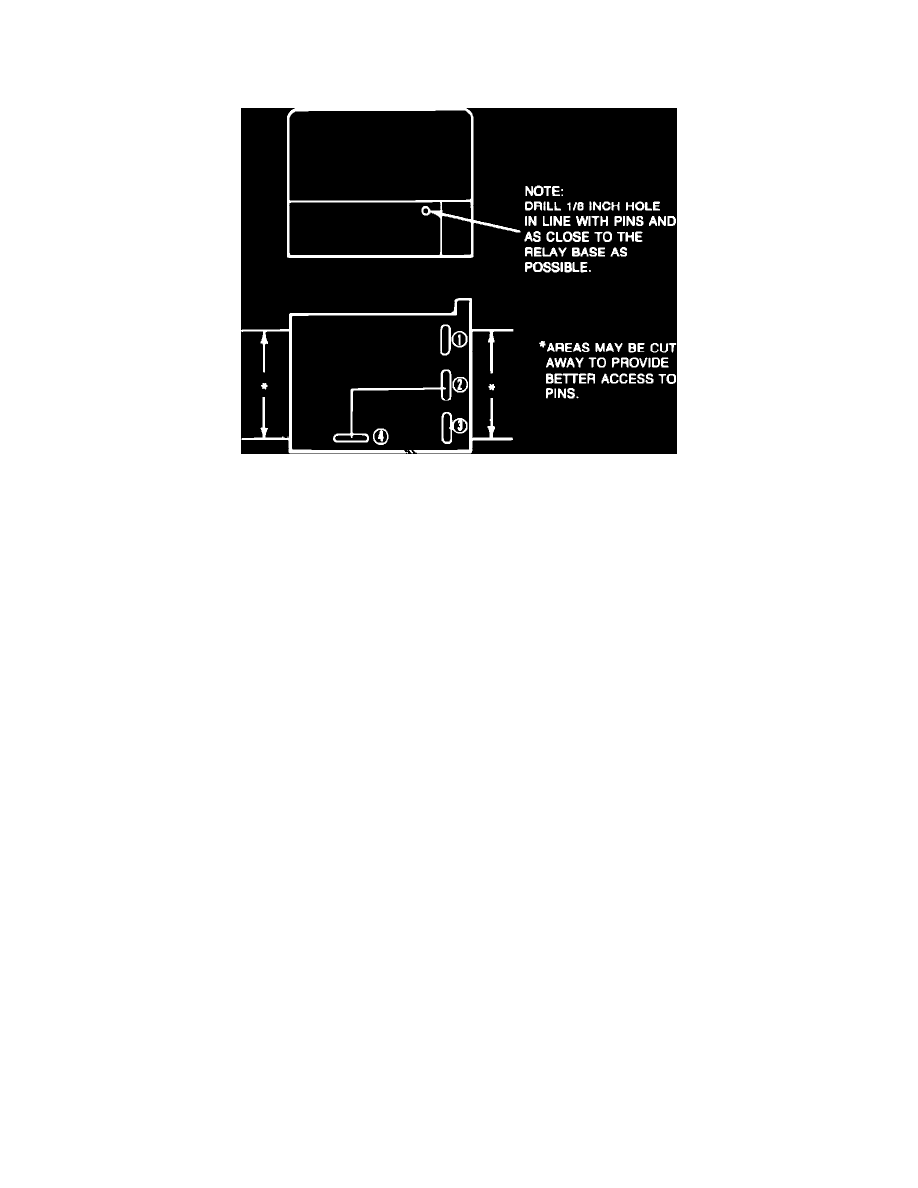Tempo L4-140 2.3L HSC (1986)

Fuel Pressure: Testing and Inspection
The following tests can be used to determine if the fuel pump is operating properly.
Fig. 14 Fuel pump relay modification
Escort, Lynx, EXP, Tempo, Topaz, Sable & Taurus
1.
Check fuel tank for adequate fuel supply.
2.
Check for fuel leakage at all fittings and lines.
3.
Check for electrical continuity to fuel pump as follows:
a. Locate inertia switch. Switch is located in the luggage compartment.
b. Disconnect electrical connector from switch and connect a suitable ohmmeter to one of the leads at the wiring harness.
c. Check for continuity between wire and ground. If no continuity is detected, switch to the other wire and recheck.
d. If continuity is not present at either lead, remove fuel tank and check continuity between wiring harness and switch leads. If the leads are
satisfactory, check for continuity across pump terminals. If no continuity, replace fuel pump. If continuity is present across terminals, check
ground circuit or connections to the pump from the body connector.
e. Connect electrical connector to switch and install a voltmeter to the wiring harness on the pump side of the switch.
f.
Turn ignition key while checking voltage to the fuel pump. Voltmeter should read 10 or more volts for one second and then return to zero.
g. If voltage is not as specified, check switch to ensure that it is not open. Check electrical circuit.
4.
Check electric fuel pump operation as follows:
a. Disconnect electrical connector from inertia switch.
b. Crank vehicle for a minimum of 15 seconds to reduce fuel pressure in the lines.
c. Disconnect fuel return line from throttle body.
d. Connect a suitable hose from fuel return fitting to a calibrated container of at least one quart.
e. Disconnect jumper hose between throttle body and the fuel filter in the engine compartment. The fuel system contains pressurized fuel
after the vehicle is shut down and will maintain this pressure for a long period of time.
f.
Connect a pressure gauge between throttle body and fuel filter.
g. Locate fuel pump relay, located behind the glove compartment on 1985 Tempo and Topaz and 1986---87 Sable and Taurus models, or on
lefthand side of instrument panel near the EEC IV module on 1986---87 Tempo Topaz models and 1987 Escort, Lynx & EXP.
h. Remove relay and replace with a modified relay, Fig. 14.
i.
Energize fuel pump for 10 seconds. Check pressure while energized. If there is no pressure, monitor the voltage past the inertia switch to
determine whether the pump is getting the proper voltage.
j.
The fuel pump is operating properly if the fuel pump pressure reaches 13---16 psi and the fuel flow is a minimum of 6 ounces in ten seconds
and fuel pressure remains at a minimum of 11.6 psi after engine shut down.
k. If pressure condition is met, but flow is not, inspect filters and fuel lines for obstructions and correct as necessary. If, after making necessary
repairs, flow conditions are still not met, replace fuel pump sender assembly.
l.
If both flow and pressure conditions are met, but pressure drops off immediately after shutdown, check for leaking injectors or regulator. If
injectors and regulator are satisfactory, replace fuel pump sender assembly.
m. If no fuel flow or pressure is observed, repeat step 4k. If no trouble is found, replace fuel pump sender assembly.
n. Replace modified fuel pump relay with original relay.
